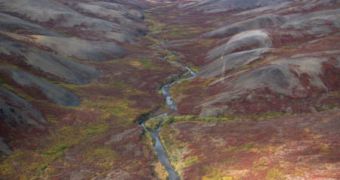Other than being outstandingly beautiful and harsh to live in, the Arctic tundra is also one of the largest carbon sinks in the world, beside the oceans. Over millennia, impressive amounts of carbon dioxide (CO2) have been trapped by the soils and permafrost in these regions, and have been stored in the frozen ground ever since. Now, as the tundra gets warmer – as evidenced by the fact that smaller or larger lakes keep popping up all over the place – those large amounts of carbon could soon be gradually released into the atmosphere, further ruining its already delicate balance.
“It's a big deal. These are aspects that haven't been recognized before,” San Diego State University ecologist Walter Oeche, who has also been the principal investigator of the new paper, says of the finds. The finds were presented at the annual meeting of the Ecological Society of America (ESA) on August 3rd, in Albuquerque, New Mexico. In addition to the danger CO2 poses, geologists have also known for a long time that important quantities of methane are also stored there, and their emission levels seem to have spiked in recent years as well.
In an attempt to determine precisely how the warming world influences the delicate balance of the tundra ecosystem and carbon cycles, Oeche's team purposefully unbalanced the water table in a small designated portion of the tundra, so as to see what happened, and to extrapolate the results at a larger scale. A 1.2-kilometer-long lake in the North Slope region of Alaska was selected for the investigation, meaning that the results of this study are more conclusive than previous ones, which only relied on drilled core samples and small lab tests for their results.
In their experiments, they divided the lakes into three parts, using plastic dikes. Then, they pumped water from one end of the lake to the other up to a certain point. The middle section was completely dried up. They then set up a number of sensors on the two portions of the lake with no water, and with more water, leaving the third as a control surface. Their idea was that, due to more water in a lake, the release of CO2 would be diminished, as less bacteria and microbes producing the gas would have sunlight to use as a source of energy.
However, the actual test results showed that the lake portion with most water became a potent carbon dioxide source, contrary to scientific predictions. The other two segments, with little water and no water at all retained their roles as carbon sinks, capturing and storing the dangerous chemical, Nature News informs.

 14 DAY TRIAL //
14 DAY TRIAL //